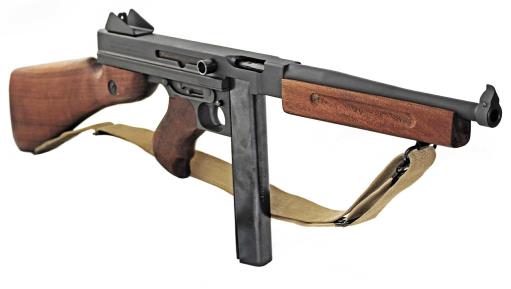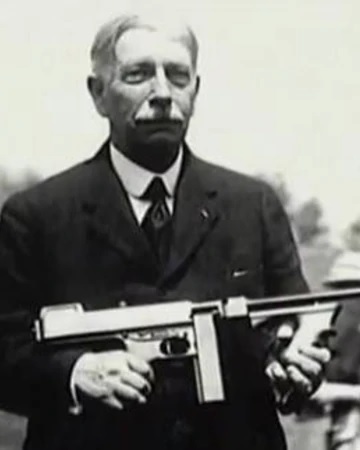In 1916, Brigadier General John Thompson retired as head of the U.S. Army Ordnance department and joined financier Thomas Ryan to develop a semiautomatic military rifle.
After almost two years of development, the engineers determined the rifle would not work with the powerful rifle rounds used by the military but would work with the standard U.S. Army pistol round, the .45 ACP.
Thompson ordered the development of what he called a “submachine’ gun using pistol rather than rifle ammunition. The new “submachine” gun could be used as a “trench broom” to clear out enemy trenches.
Their submachine gun was finished too late to be used in WWI. The company, Auto Ordnance Corporation, had no production facilities of their own so contracted with Colt to produce 15,000 submachine guns to be called the Model 1921. Some of these were later modified by Auto Ordnance into the Model 1927 (extremely rare, semiautomatic only) and the Model 1928.
Demand from individuals, companies, military and law enforcement agencies was low enough that the initial production run of 15,000 was not sold out until 1940 when WWII increased demand.
The Thompson Model 1928 was put back into production to meet demand. A simplified version, the M1 and later the M1A1, were introduced to replace the Model 1928.
In 1931 the Civil Service commission reviewed the equipment the San Diego Police Department had available for emergencies and recommended the department purchase two submachine guns. One of the Department’s Thompson’s was used during the Hub Loan shootout in 1965.
A Thompson was also kept in the SDPD Special Weapons And Tactics van for emergency use until at least 1982.
In 2002, Retired Sergeant Alvin Beckett contacted the San Diego Police Historical Association with an unusual donation - a fully automatic, Thompson submachine gun.
The weapon has since been rendered inoperable and is on display in the San Diego Police Museum.




John Thompson